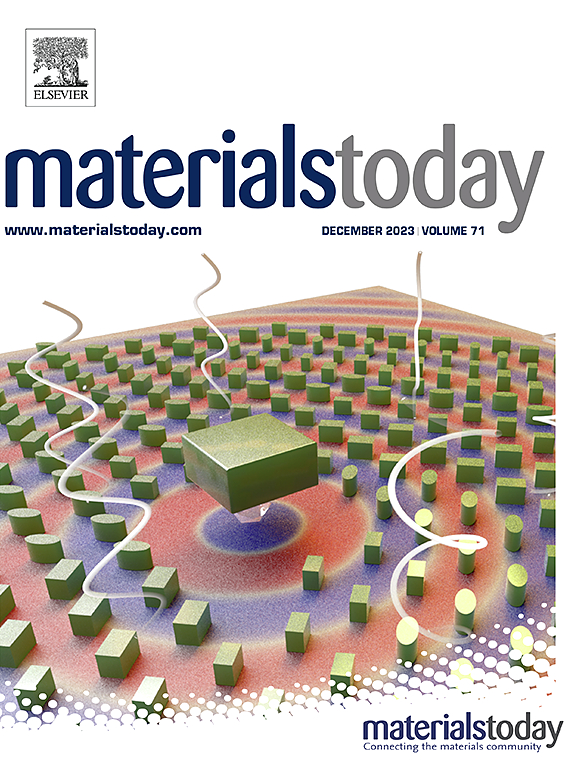纳米医学支持的下一代脊髓损伤治疗方法
IF 21.1
1区 材料科学
Q1 MATERIALS SCIENCE, MULTIDISCIPLINARY
引用次数: 0
摘要
脊髓损伤(spinal cord injury, SCI)是神经学临床实践中的一个重大挑战,它可以发生在不同年龄和背景的个体中,经常导致运动和感觉功能的丧失。脊髓损伤复杂的病理生理机制导致目前缺乏有效的治疗方法来再生受损的神经元细胞和恢复运动功能。脊髓的原发性机械损伤引发一系列继发性损伤,导致脊髓损伤患者预后不良。尽管在脊髓损伤的支持治疗方面取得了一些进展,但迫切需要显著改善神经预后的治疗。不幸的是,目前的临床治疗,如手术减压,很少修复受损的神经。然而,尽管存在这些挑战,纳米技术和纳米材料的迅速发展提供了新的希望。在这篇综述中,我们全面总结了纳米材料治疗脊髓损伤的最新进展。首先,讨论脊髓损伤的病理和生理进展及其特异性。此后,我们系统地探索纳米材料引发的脊髓损伤治疗,包括药物递送系统、纳米生物材料和多功能纳米反应系统,以促进脊髓损伤后神经系统的恢复。最后,在最新进展的基础上,我们总结了对持续挑战的见解,并描绘了这一快速新兴领域的前景发展。本文章由计算机程序翻译,如有差异,请以英文原文为准。

Nanomedicine-enabled next-generation therapeutics for spinal cord injury
As a major challenge in neurological clinical practice, spinal cord injury (SCI) can occur in individuals of different ages and backgrounds, frequently leading to the loss of motor and sensory function. The intricate pathophysiology of SCI is responsible for the current lack of effective treatments to regenerate damaged neuronal cells and restore motor function. Primary mechanical injury to the spinal cord initiates a cascade of secondary damage, leading to a poor outcome for SCI patients. Despite some advances in supportive care for SCI, treatments that significantly improve neurological prognoses are urgently needed. Unfortunately, current clinical treatments, such as surgical decompression, rarely repair damaged nerves. Despite these challenges, however, the burgeoning development of nanotechnology and nanomaterials offers new hope. In this review, we comprehensively summarize recent advances in nanomaterial-enabled SCI treatment. First, the pathology and physiologic progression of SCI and its specificity are discussed. Thereafter, we systematically explore nanomaterial-initiated SCI therapies, including drug delivery systems, nano-biomaterials, and multifunctional nano-response systems, to facilitate neurological recovery after SCI. Finally, on the basis of the latest advancements, we conclude with insights into persistent challenges and delineate prospective developments in this rapidly emerging field.
求助全文
通过发布文献求助,成功后即可免费获取论文全文。
去求助
来源期刊

Materials Today
工程技术-材料科学:综合
CiteScore
36.30
自引率
1.20%
发文量
237
审稿时长
23 days
期刊介绍:
Materials Today is the leading journal in the Materials Today family, focusing on the latest and most impactful work in the materials science community. With a reputation for excellence in news and reviews, the journal has now expanded its coverage to include original research and aims to be at the forefront of the field.
We welcome comprehensive articles, short communications, and review articles from established leaders in the rapidly evolving fields of materials science and related disciplines. We strive to provide authors with rigorous peer review, fast publication, and maximum exposure for their work. While we only accept the most significant manuscripts, our speedy evaluation process ensures that there are no unnecessary publication delays.
 求助内容:
求助内容: 应助结果提醒方式:
应助结果提醒方式:


